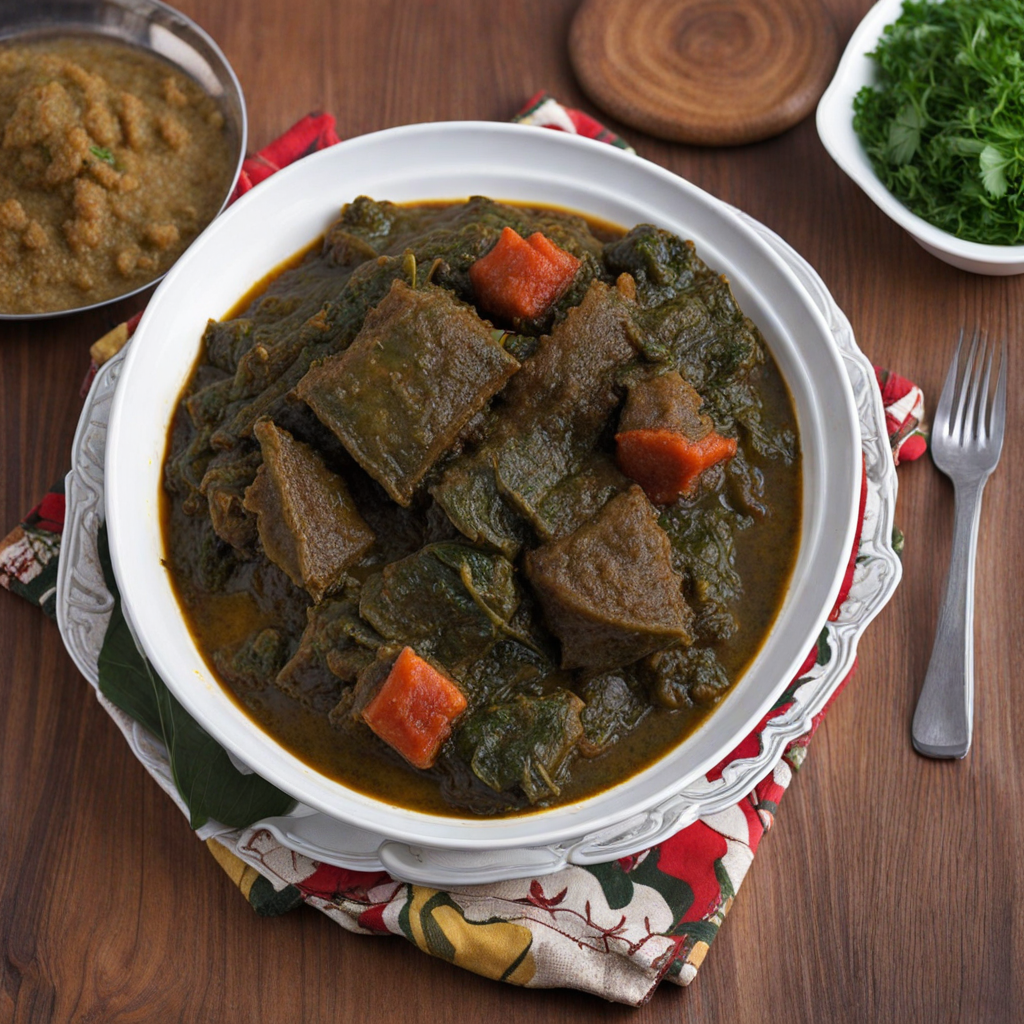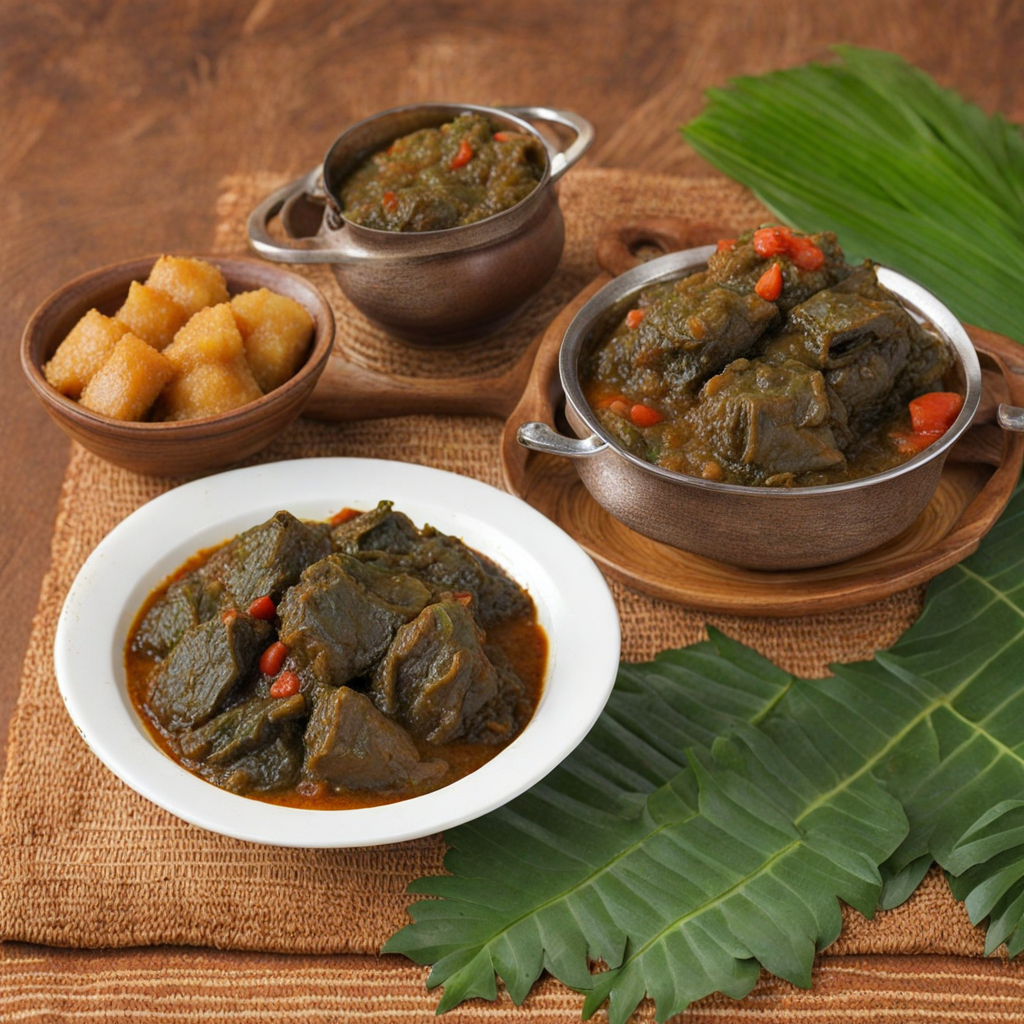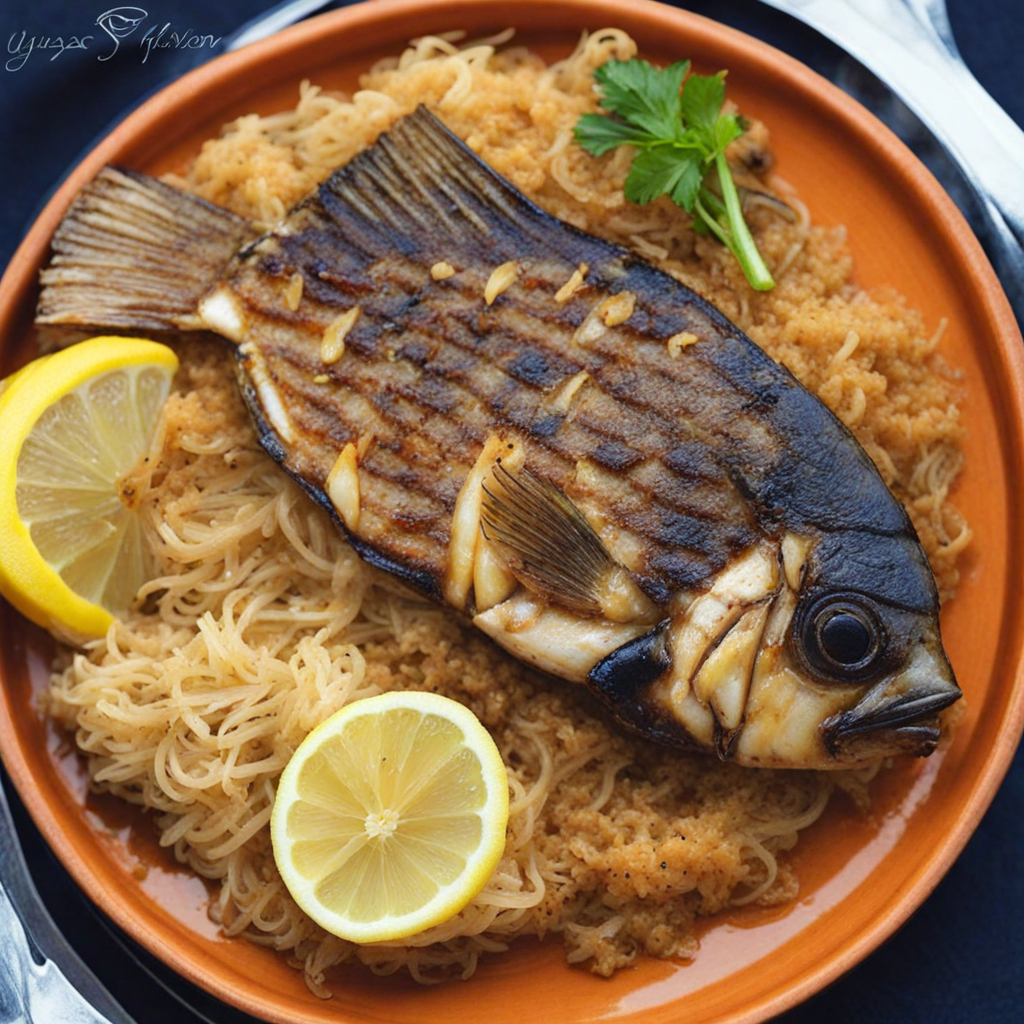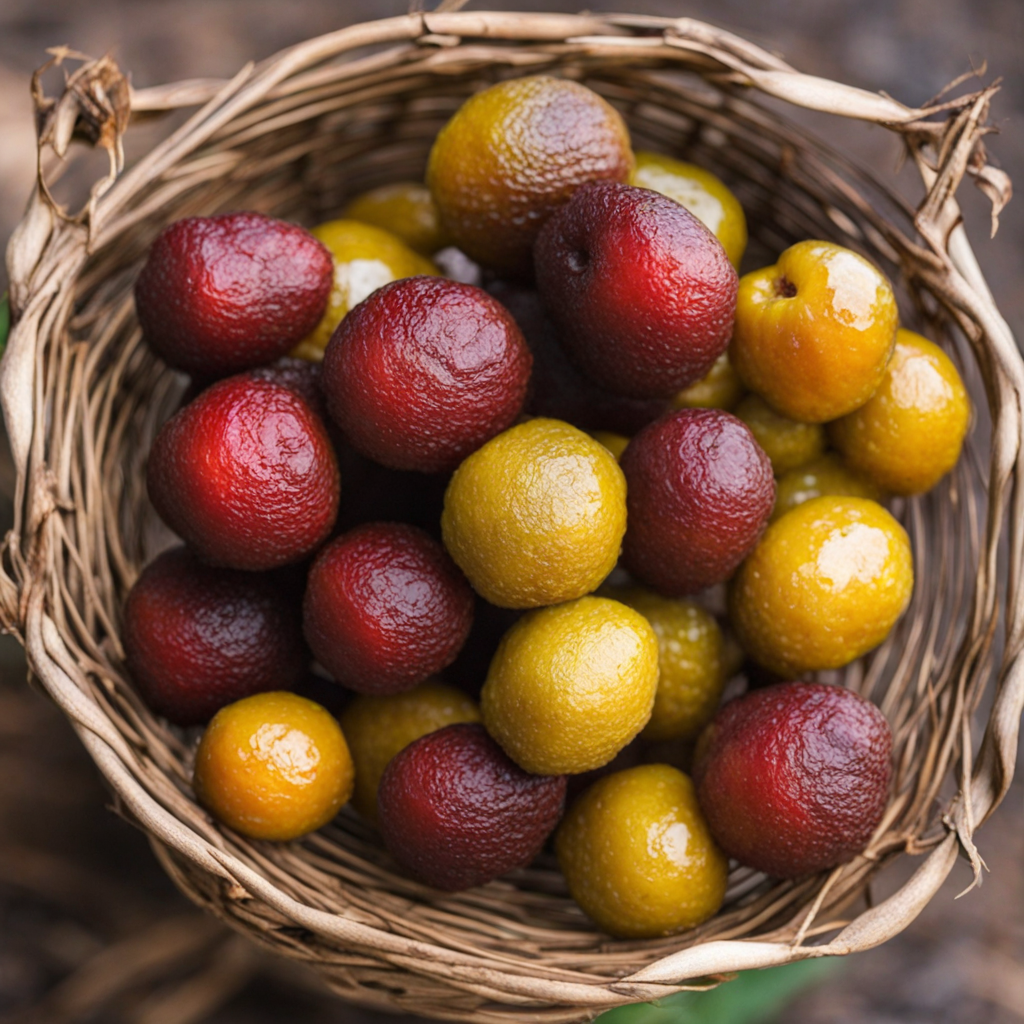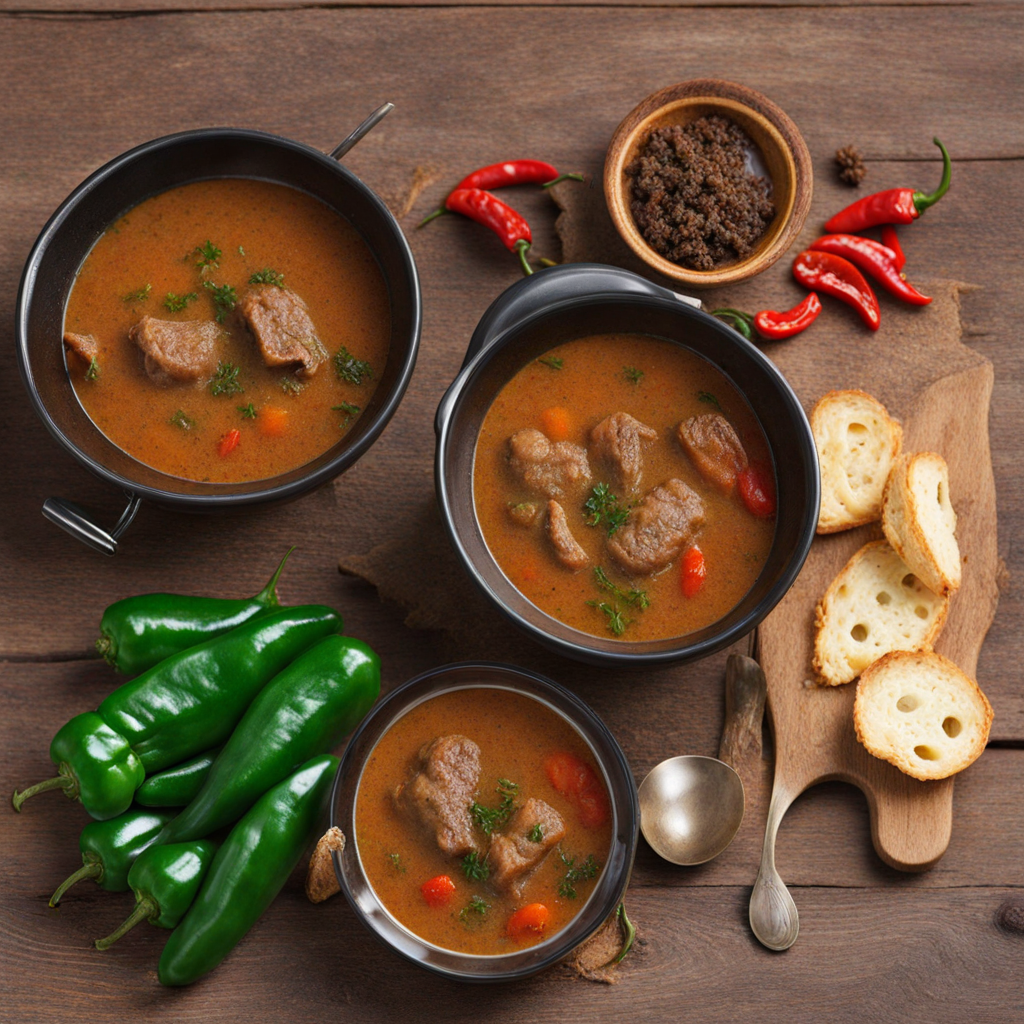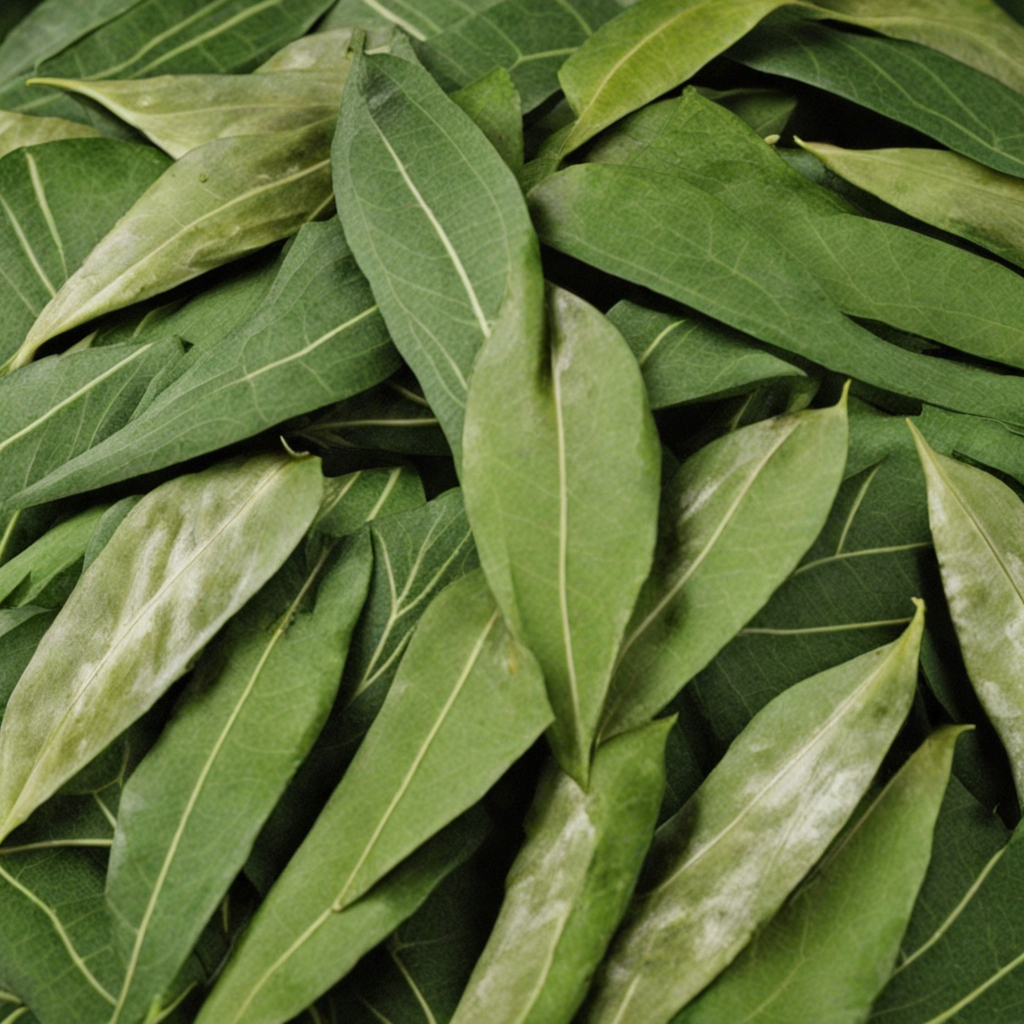Saka Saka
Saka Saka is a traditional dish from Gabon that showcases the rich culinary heritage of Central Africa. Made primarily from cassava leaves, this unique dish is both nutritious and flavorful. The leaves are typically harvested from the cassava plant, which is known for its starchy roots. To prepare Saka Saka, the leaves are finely chopped and then cooked with a variety of ingredients, often including palm oil, onions, and spices, which elevate its taste and aroma. The result is a vibrant green dish with a slightly earthy flavor that captivates the palate.
How It Became This Dish
Saka Saka: A Culinary Journey Through Gabon #### Origins of Saka Saka Saka Saka, a cherished dish from Gabon, holds a special place in the hearts and kitchens of its people. This traditional meal primarily consists of cassava leaves, which are finely chopped and cooked, often with ingredients such as palm oil, peanuts, and fish or meat. The origins of Saka Saka can be traced back to the indigenous communities of Central Africa, where cassava is a staple crop. The plant, believed to have originated from South America, was introduced to Africa by Portuguese explorers in the 16th century. Its adaptability to various climates allowed it to thrive in the humid, tropical regions of Central and West Africa, making it a vital part of the local diet. The preparation of Saka Saka is deeply rooted in Gabonese culture, reflecting the agricultural practices and culinary traditions of the region. The dish embodies the connection between the land and its people, showcasing how local ingredients can be transformed into a nourishing meal. Historically, the gathering of cassava leaves was often a communal activity, with families and neighbors coming together to harvest, prepare, and share the dish, reinforcing social bonds and cultural identity. #### Cultural Significance Saka Saka is more than just a dish; it is a symbol of Gabonese identity and heritage. The preparation and consumption of this meal are often associated with significant cultural practices and ceremonies. For instance, it is common to see Saka Saka served during family gatherings, celebrations, and traditional rites of passage. The dish's rich flavors and vibrant green color evoke a sense of warmth and togetherness, making it a staple at both everyday meals and special occasions. In Gabon, food is closely tied to social and cultural rituals. Saka Saka is often enjoyed with fufu, a starchy side dish made from cassava or plantains, which complements the rich flavors of the leaves. This pairing is a testament to the importance of balance and harmony in Gabonese cuisine. The communal aspect of sharing Saka Saka, whether in a family setting or at larger festivals, reinforces a sense of unity and cultural pride. Moreover, Saka Saka is a reflection of the broader culinary landscape of Gabon, which is characterized by its reliance on local ingredients and traditional cooking methods. The dish embodies the principles of sustainability and self-sufficiency, as it utilizes readily available resources. This connection to the land and its bounty is a recurring theme in many Gabonese dishes, emphasizing the importance of preserving cultural practices and ingredients for future generations. #### Development Over Time Over the years, Saka Saka has evolved while retaining its traditional roots. In the past, the dish was primarily prepared using simple, locally sourced ingredients. However, as globalization and urbanization have taken hold, the way Saka Saka is made and consumed has begun to change. Urban centers in Gabon, such as Libreville, have seen an influx of new ingredients and cooking techniques, leading to variations of the traditional recipe. While the classic Saka Saka remains beloved, modern interpretations may incorporate ingredients like chicken or shrimp, reflecting a fusion of culinary styles. Some chefs and home cooks have also experimented with flavors by adding spices and herbs that were not traditionally used, broadening the dish's appeal. This evolution illustrates how food can adapt to the changing tastes and preferences of a society while still honoring its heritage. Additionally, the rise of the international food scene has brought greater visibility to Gabonese cuisine, including Saka Saka. As chefs from Gabon have migrated to other countries, they have introduced this dish to a global audience, sparking interest in its unique flavors and cultural significance. This exposure has not only popularized Saka Saka but has also encouraged a renewed interest in traditional cooking methods and local ingredients. Despite these developments, the essence of Saka Saka remains intact. Many Gabonese people continue to prepare the dish using time-honored techniques, passing down recipes and stories from one generation to the next. This transmission of culinary knowledge is crucial for preserving cultural identity in an increasingly globalized world. #### Conclusion Saka Saka is more than just a meal; it is a culinary emblem of Gabon, encapsulating the history, culture, and resilience of its people. From its humble origins as a staple food to its place in contemporary Gabonese cuisine, Saka Saka tells a story of connection, community, and continuity. It reminds us that food is not only about sustenance but also about the relationships we cultivate and the traditions we uphold. As Gabon continues to navigate the complexities of modernity, dishes like Saka Saka serve as a poignant reminder of the importance of honoring cultural heritage while embracing innovation. Whether enjoyed at a family gathering, a festive celebration, or a fine dining experience, Saka Saka remains a testament to the rich tapestry of Gabonese culinary tradition, forever linking the past with the present and future.
You may like
Discover local flavors from Gabon


